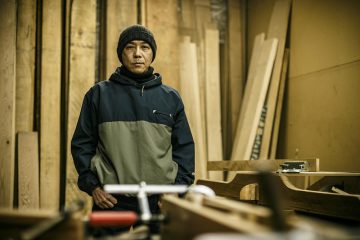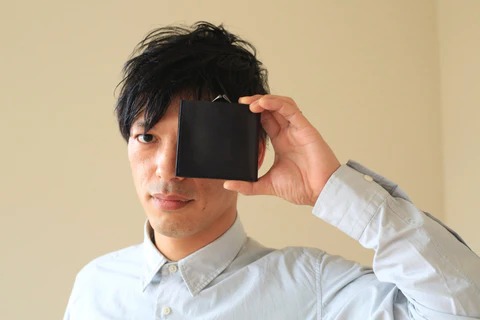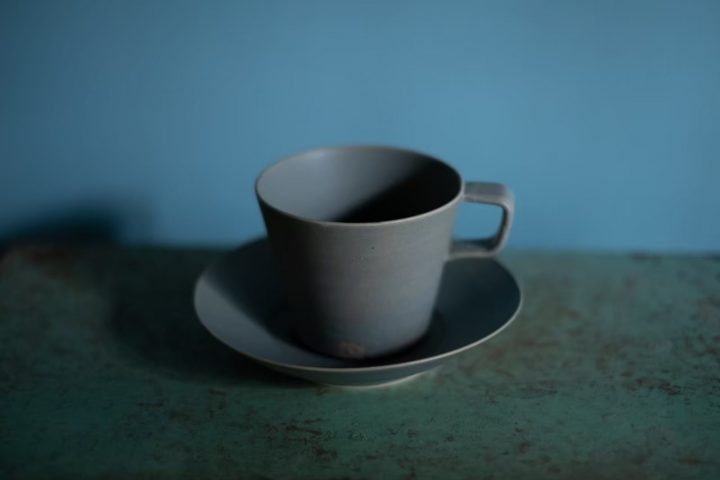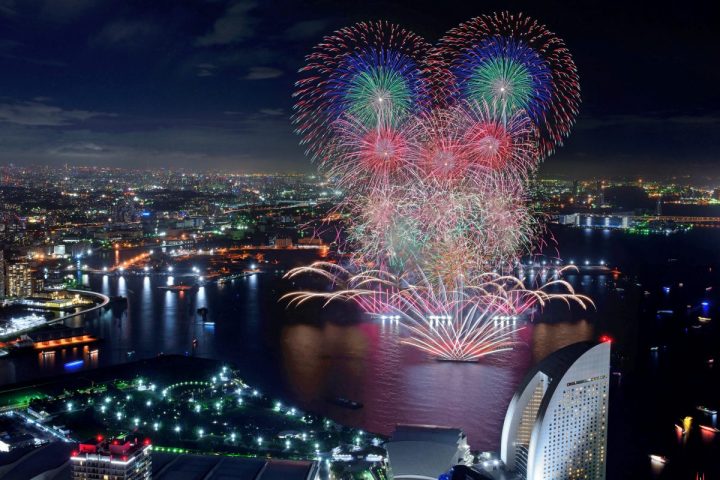Yokohama's flavors loved around the world: An interview with Yoshimura Minoru of the Yoshimura family, headquartered in the Iekei sushi restaurant chain

Soy sauce soup based on tonkotsu and chicken bones. Thick noodles that cling to the soup. Topped with spinach, char siu, and seaweed. Iekei ramen has now been established as a genre of ramen. Its origin and pinnacle is Yoshimuraya, the head temple of Iekei ramen, which opened in Shinsugita in 1974. It is now a thriving popular restaurant in Nishi Ward, Yokohama, with queues of people waiting day and night. We spoke with Yoshimura Minoru, chairman and creator of Iekei ramen. He spoke candidly about how he started the ramen shop and his thoughts on ramen.
──What made you decide to open a ramen shop?
My family was poor, so I wanted to be rich. I only graduated from junior high school, so I basically had an inferiority complex. When I was a student... I guess you could call it my school days, I lost then, so I wanted to win in society. That's all there is to it. So I didn't want to lose to people who had graduated from university or had good jobs. I thought it was fine as long as I won in life, and that it was fine as long as I won when I died. That's why I opened the ramen shop.
── Do you teach people how to make Iekei ramen?
The word "iekei" means "family." I teach because it's "family." Six ramen chefs came from Yamaguchi Prefecture on Sunday, and I taught them without getting paid. I don't teach that much, so that kind of thing happens very rarely. The word "iekei" means "family." That's why I hope that everyone I teach becomes rich.
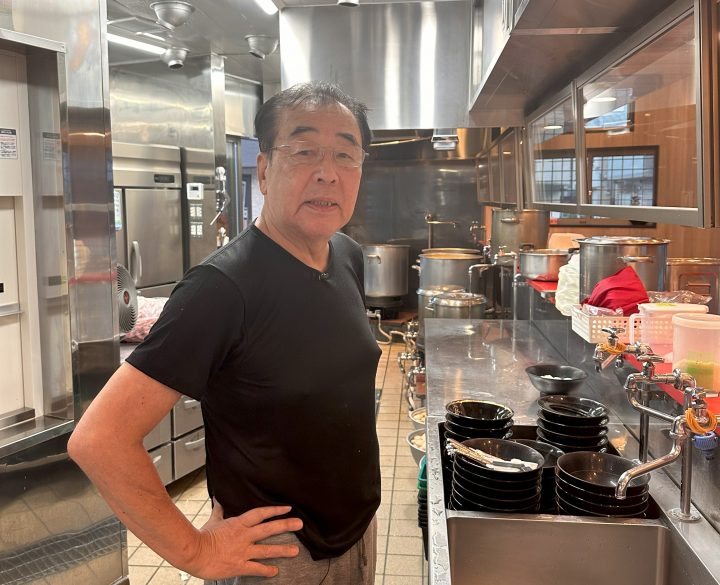
── Could you tell us how you ended up opening your shop in the center of Yokohama?
Because I wanted to become famous. When I was in Shinsugita, my rent was 180,000 yen, but when I came to Yokohama it went up to 2 million yen. I wasn't sure if I could make it there, but now, 40 years later, I've made it here enough to build a building worth 230 million yen. Even so, the land isn't that big, only about 80 square meters. That's partly because I worked hard, but I think it's also because I got to know a lot of different people.
──Please tell us about your typical day when making ramen.
I usually wake up at midnight, start work at 2 a.m., and go to bed at 5 p.m. I eat dinner at 3 p.m. and breakfast around 7 p.m. I only eat about two meals a day. I don't exercise, and eating too much makes me fat. But I'm 76, so I think I'm in better shape than the average person. I used to only eat ramen about three times a month, but now I can't eat that much. I mostly eat vegetable and light dishes. I also go out on Sundays. You never really know what's good unless you try a few different restaurants. I go to two or three ramen shops and the like. But 99% of the places that used to be good have gotten worse. That's because my father isn't there anymore, and neither is the proprietress. I've been there for a long time, so I don't think the food will get worse, even if it gets better. But who knows what will happen when my son takes over. So far, both my son and daughter are passing grades. They could even go out on the world stage and win.
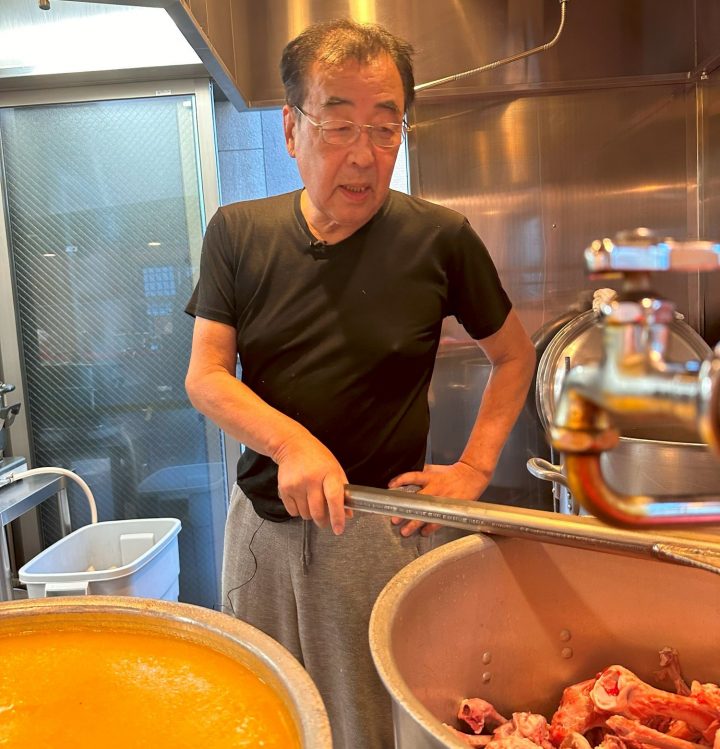
──What is the appeal of Yokohama to you, Mr. Yoshimura?
Customers are always open to new things. That's what's great about Yokohama customers. It's the same with politics, but surprisingly, Kanagawa and Yokohama are always ahead of the curve. I think this is the spirit of Yokohama citizens and Kanagawa prefecture residents. They don't mind taking on new challenges. They're not too influenced by the media. They just try it for themselves and if it suits them, that's fine. That's why it was great to open in Yokohama.
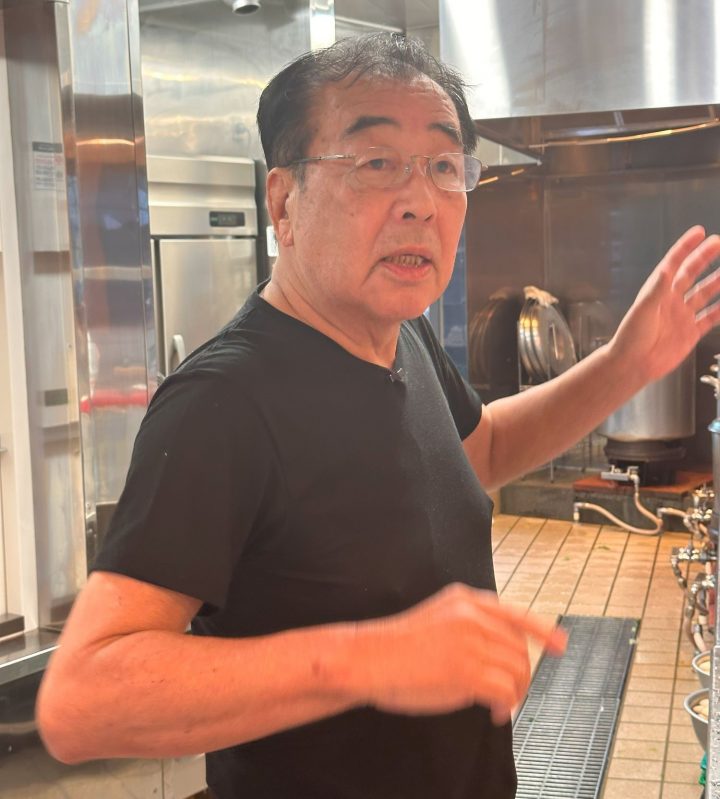
-- Ramen is a popular food all over the world right now, so do you have anything to say to ramen fans?
You have to wait two to three hours, so if you don't like waiting, you should go to another ramen shop. That's because it's a Japanese taste (laughs). This (Yoshimuraya's ramen) isn't a Japanese taste. My ramen is made with three pots of soup (pointing to a stockpot) and new ones are made every day, so it's fresh and has a lot of different ingredients added to it. It doesn't taste of additives. But it seems to be accepted all over the world.
But there's a limit to how much you can make in a day. If we make 1,000 servings, we won't have enough soup. So I'm sorry to keep you waiting, but there aren't many shops that make it in a pot that big and keep three bowls in stock all the time. They just make it little by little, heat it up, and that's it. That's not a ramen shop, it's called a vending machine.
We don't make our products in a factory, 99% of it is handmade. We make our own vinegar and ginger. It seems like there aren't many ramen shops in Japan that have a lot of private brands. It seems like ours is the only one. I think that's why we have so many foreign customers. Foreigners must know the taste really well. It's giving me a headache, because you can't fool them. They're getting more and more used to ramen. You can't fool this guy with just a little trick.
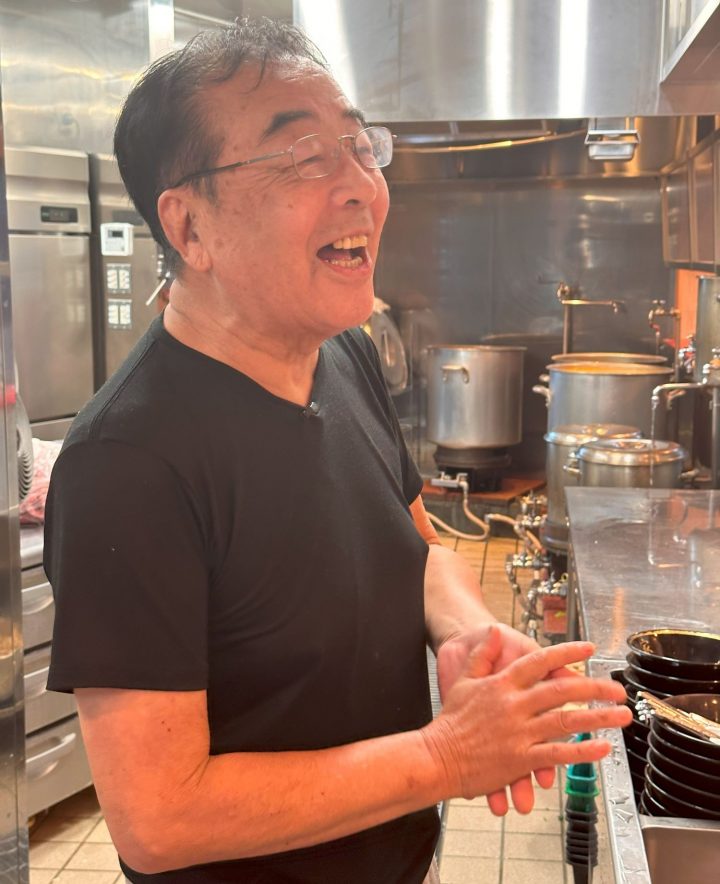
"Thank you for the perfect interview," concludes Chairman Yoshimura, who flashes the biggest smile of the day. Regarding the future of Yoshimuraya, he says, "It's still early days. I've only been here for about 47 years. In another three or four years I'll be... 80. I can't help but think about it. But I still feel like I have a long way to go." The flavor of Yoshimuraya, born in Shinsugita, now captivates people all over the world. It is likely that they will continue to create memorable bowls of ramen that represent Yokohama and Kanagawa.
As you can see, Kanagawa Prefecture has a diverse and fascinating food culture that can only be experienced here. Why not combine your visit to a cultural arts or event with interacting with local people and enjoy Kanagawa's unique cuisine, seasonal ingredients, alcohol, and other food culture?
